Festival du Ginseng de Punggi à Yeongju (영주 풍기인삼축제)
17.6Km 2019-08-28
Baek-ri, Punggi-eup, Yeongju-si, Gyeongsangbuk-do
054-635-0020
Le ginseng Pung-gi, réputé pour sa qualité, ne pousse que dans les montagnes Sobaeksan. Le festival coincide avec la saison de récolte du ginseng, aux alentours d'octobre.
La raison de la popularité du ginseng Pung-gi est sa forte concentration en ‘saponin’, qui aide à réguler la pression sanguine, à prévenir le cancer et à revitaliser le corps. Vous pourrez cuiellir vous même le ginseng et goûter à des plats à base de ginseng Pung-gi. De nombreux sites touristiques se trouvent dans la région Yeongju, comme le temple Buseoksa et les sources thermales Sobaeksan Pung-gi.
Terminal des bus interurbains de Chunyang
18.5Km 2011-02-18
430-1 Uiyang-ri Chunnyang-myeon Bonghwa-gun Gyeongsangbuk-do
+82-54-672-3477
Seongamje / 성암재
18.6Km 2025-03-05
19-18, Seodong-gil, Bonghwa-gun, Gyeongsangbuk-do
+82-54-673-5011
Located in Chunyang-myeon, Bonghwa-gun, Gyeongsangbuk-do, Seongamjae is a traditional hanok built with pine trees (Geumgangsong) in 1915. It was owned by Seongam Gang Seungwon, the third son of Uijae Gang Pil of distinguished service to independence. Seongamjae is the place where Mr. Uijae Gang Pil delivered fund to the Provisional Government of Korea in Shanghai, which was then used by the 3rd division of army during the Korean War. Now, the grandson of Mr. Seongam Gang Seungwon and his wife are keeping the place and named it Seongamjae after his grandfather. They run it as a hanok open to the public in order to help spread history and culture. The owner couple has committed themselves to keeping the house and gardening. Nevertheless, the traditional hanok is equipped with modern facilities so that people of all age groups, Koreans and foreigners alike, may have a relaxed time here. Bordering Seongamjae is the National Folk Cultural Asset No. 279 Bonghwa Mansan Gotaek, home to the family of the owner of Seongamjae, and open to everyone who stays in Seongamjae. Cooking is limited in the hanok but there are restaurants nearby. Korean style Yeonbab is provided at 15,000 won per person when breakfast is booked in advance. As Chunyang Station of Yeongdong Line is a 5-minute walk away, the accommodation is conveniently located for train travelers. Note that luggage storage service is provided after check-in while visitors are enjoying walking, trekking, or travelling by train.
On-gye Jongtaeg (Sambaegdang) / 온계종택 삼백당
18.7Km 2025-03-04
20, Onhyejungma-gil, Andong-si, Gyeongsangbuk-do
+82-10-2988-3435
Ongyejongtaek Sambaekdang is a hanok restored on the site where Ongye Yihae, older brother of Toegye Yi Hwang, used to live. Being the headquarters of the rightoue army against the Japanese, the house was burned by the Japanese military authority in 1896 but restored with support from the government and others, and it was finally completed in May 2011. It is the 500-year old chestnut tree, symbol of the village, which welcomes guests first. The house itself is not old but the atmosphere of the family dominates the building with dignity. Small decorations such as a wooden table, floor cushions, and mother-of-pearl furniture pieces are all nice to look at. There are 7 rooms altogether with bathrooms or air conditioners depending on the room size. There are a shared shower facility and a laundromat outside the rooms, with shared kitchen, warehouse, and a big floor. Cooking is not allowed in the rooms but outdoor barbecue facilities are available for a group of 10 or more who inquire in advance. Tea ware pouch making or Hanji craft programs are conducted based on the reservation at a charge. In the village where the house is located, there are several historic and natural sites such as Nosongjeongjongtaek where Toegye Yihwang was born, Nongamjongtaek, Toegyejongtaek, Dosanseowon Confucian Academy, Advanced Center for Korean Studies, Cheongryangsa Temple, and Dosan Spa.
Nosongjung Head House
19.0Km 2021-04-09
46-5, Onhyejungma-gil, Dosan-myeon, Andong-si, Gyeongsangbuk-do
+82-10-2065-3749
Nosongjeong, also called the “Placenta Chamber of Yi Hwang” (pen-name: Toegye, 1501-1570), is named after the pen-name ‘Nosong’ of Yi Hwang’s grandfather Yi Gye-yang. It is said that Yi Gye-yang abandoned his government position after he fell victim to the Gyeyujeongnan Suppression (a coup d’état instigated by Suyang Prince, who became King Sejo of Joseon, in 1455) and returned to his hometown in Bonghwa, where he devoted himself to teaching students. He built the house in its current location by a coincidence of saving a monk. The Placenta Chamber of Yi Hwang, which is situated deep in the house, consists of an Ondol (Korean floor heating) Room and a small numaru (upper floor) with a unique design. The gate bears a signboard with the word ‘Seonglimmun’ written by Hakbong Kim Seong-il (a direct disciple of Yi Hwang), which derives from the fact that the mother of Yi Hwang, Chuncheon Park, had a conception dream about Confucius entering the main gate with his disciples. Nosongjeong has an Ondol room in the west, with a numaru and a maru (wooden floor) in the east, which could accommodate 20 to 30 students. The signboard of Noseongjeong is believed to have been written by Han Seok-bong (a leading calligrapher of the mid-Joseon period). The structure of Nosongjeong is considered an invaluable resource for studies on the principles of building a half-hipped roof. The shrine is situated east of Nosongjeong, between which there was a juniper aged over 400 years from which the name of Nosongjeong was originated as people called the juniper as an old (no) pine (song). However, the original juniper has been replaced by its younger juniper tree with an umbrella shape of the top.
Festival du pont de l'unique rondin de l’île de Museom (무섬외나무다리축제)
19.7Km 2024-11-29
Sudo-ri, Munsu-myeon, Yeongju-si, Gyeongsangbuk-do
+82-54-639-3794
Le village de Museom est situé à l’endroit où la rivière Naeseongcheon (en amont de la rivière Nakdonggang) et la rivière Seocheon se rejoignent. Ainsi, ce village a la particularité d'être entouré d’eau. Le village est appelé « Sudori » ou « Museom », ce qui signifie « une île au milieu des terres ». Ce village traditionnel possède neuf monuments culturels, incluant Haeundang (monument folklorique n° 92) et Manjukjae (monument folklorique n° 93), deux magnifiques demeures anciennes exprimant parfaitement le formalisme simple de l’ancienne noblesse.
Le festival du pont de l'unique rondin de l’île de Museom, organisé tous les ans en octobre, est un évènement incontournable de la région de Yeongju. Le pont de Museom, formé d’une unique planche, est l’un des 100 plus beaux chemins de Corée sélectionné par le Ministère de la Terre, des Transports et des Affaires Maritimes. Le pont fait seulement 23 cm de large, et relie le village à la terre en enjambant la rivière entourant le village. Le festival a pour but de préserver et de promouvoir la culture traditionnelle de la Corée au travers de nombreuses activités folkloriques.
Village de Museom à Yeongju (영주 무섬마을)
19.8Km 2021-05-25
31-12, Museom-ro 234beon-gil, Yeongju-si, Gyeongsangbuk-do
+82-54-638-1127
Situé à Sudo-ri (Munsu-myeon, Yeongju, province du Gyeongsangbuk-do), le village de Museom est une charmante bourgade de hanok entouré d’eau. Les rivières de Naeseongcheon et de Yeongjuchon prennent leur source aux monts Sobaek et Taebaek, et convergent vers le village de Museom, l’entourant d’eau par trois côtés. Ce village semblable à une île est non seulement un haut lieu de la culture traditionnelle coréenne, mais il possède également un environnement naturel splendide, complété par une grande plage de sable et une forêt luxuriante.
Célèbre pour les maisons Haeudang et Manjukje (deux des hanoks les plus historiques de la région), le village est également connu pour ses exceptionnelles maisons traditionnelles comme la maison de Kim Gyu-jin et la maison de Kim Wi-jin. Manjukje est située au coeur du village, et elle est également appréciée par les visiteurs internationaux comme étant la plus ancienne maison traditionnelle du village de hanok. Manjukje a été construite en 1666 (lors de la 7ème année du règne du roi Heonjong) par Bak Su (le patriarche de la famille Bak de Bannam).
Près de Manjukje se trouve la maison Manun, construite au début du XIXème siècle et baptisée d’après Kim Hwi-geol, dont le nom de plume est « Manun ». La maison est devenue plus tard la résidence de l’épouse du célèbre poète Jo Ji-hun, auteur de « Byeolli », un poème exprimant la beauté du village de Museom.
Parmi les autres maisons notables, on peut citer celle de Kim Jin-wi (une maison appartenant à des aristocrates), celle de Kim Jeong-gyu (une maison dépourvue de la clôture extérieure traditionnelle) et celle de Jae-yeon, où les écrits de Bak Gyu-su (lettré appartenant à l’école de pensée Silhakpa à la fin de la dynastie Joseon) se trouvent encore aujourd’hui.
Le Pont de l’Unique Rondin constitue une autre attraction du village. Ce pont a représenté le seul lien avec le monde extérieur pendant plus de 250 ans, avant la construction du pont de Sudo en 1979. Il est minuscule en largeur (30 cm) mais On dit qu’il était reconstruit chaque année après avoir été détruit à chaque saison des pluies. Avec la construction du pont de Sudo, le Pont de l’Unique Rondin était inutile, mais il a été reconstruit quelques temps après sous sa forme originale. Pour rendre hommage à l’histoire impressionante du pont, le festival Oeinamu Dari (qui signifie Festival du Pont de l’Unique Rondin) a lieu tous les jours en octobre.
Parc provincial du Mt. Cheongnyangsan (청량산도립공원)
19.9Km 2022-08-10
39, Gwangseok-gil, Bonghwa-gun, Gyeongsangbuk-do
+82-54-679-6651
Le mont Cheongnyangsan a une altitude de 870 mètres et propose divers sites touristiques comme le pic Geumtapbong, les cascades Gwangchangpokpo, le temple Cheongnyangsa, etc. Derrière le rocher du parc provincial, on trouve un monument avec un poème inscrit par le célèbre savant Toegye Hwang I de la période Joseon appelé Cheongnyangsanga.
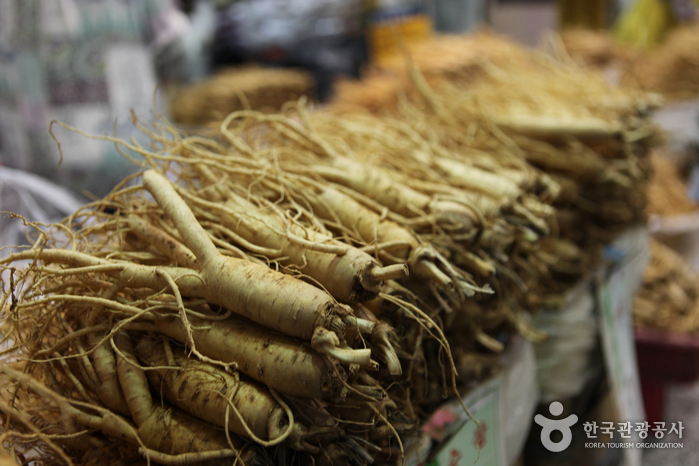

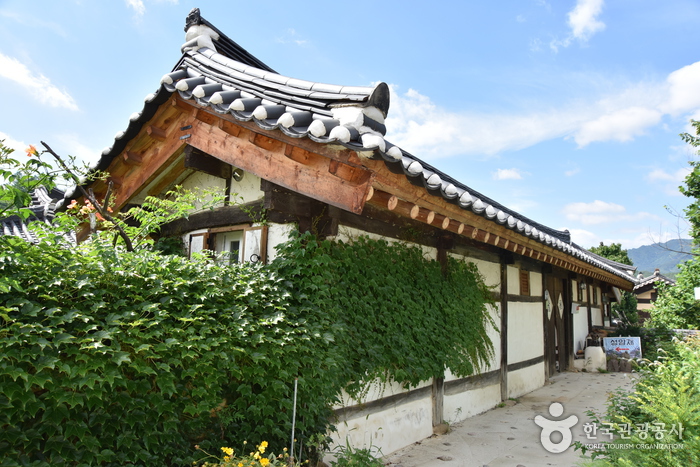
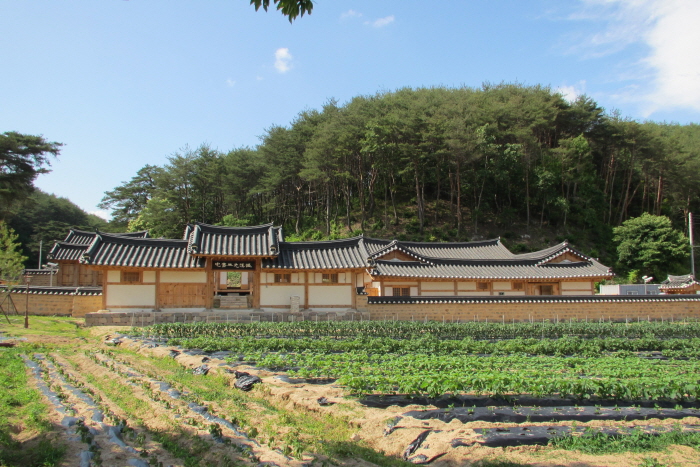
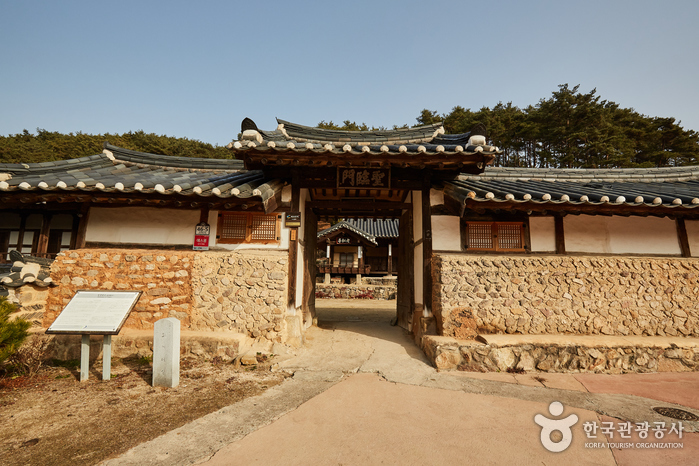
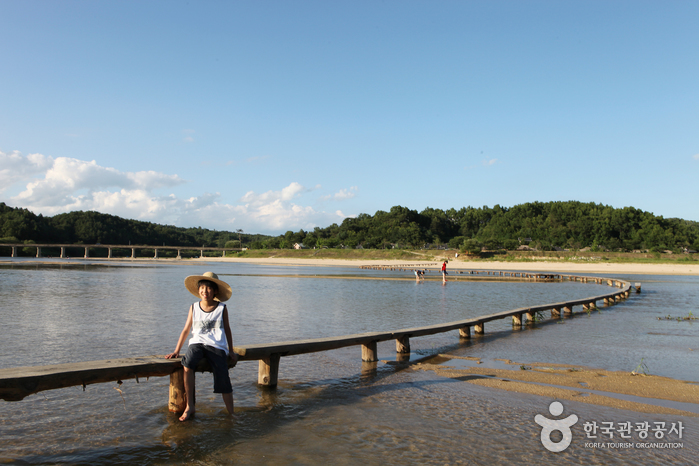
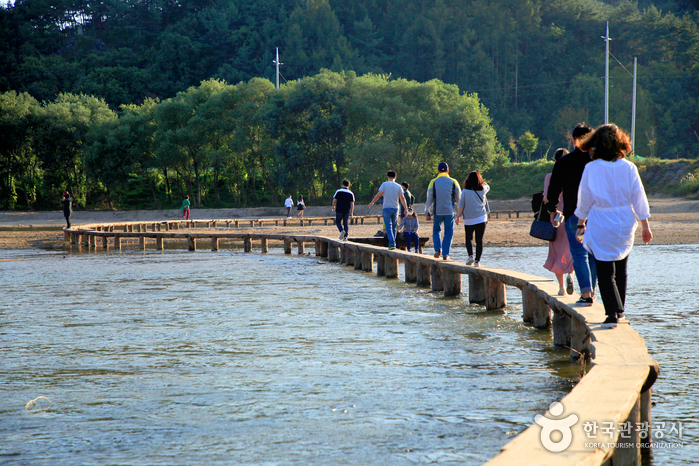
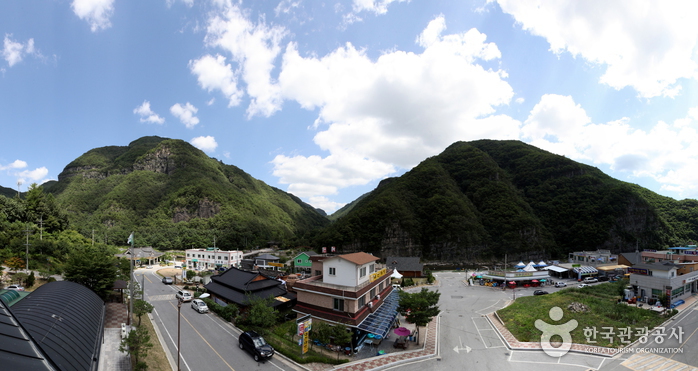
 Français
Français
 한국어
한국어 English
English 日本語
日本語 中文(简体)
中文(简体) Deutsch
Deutsch Español
Español Русский
Русский